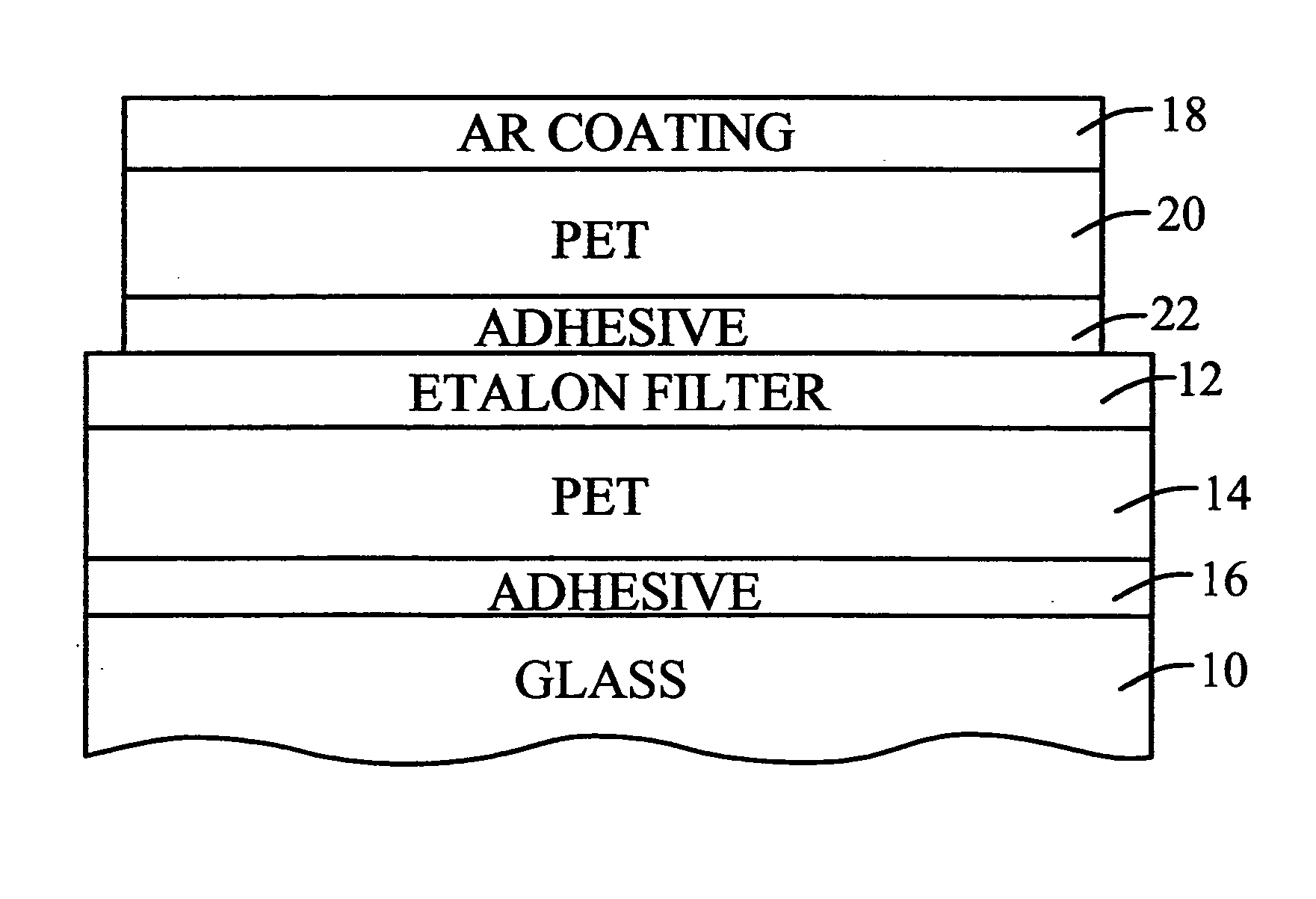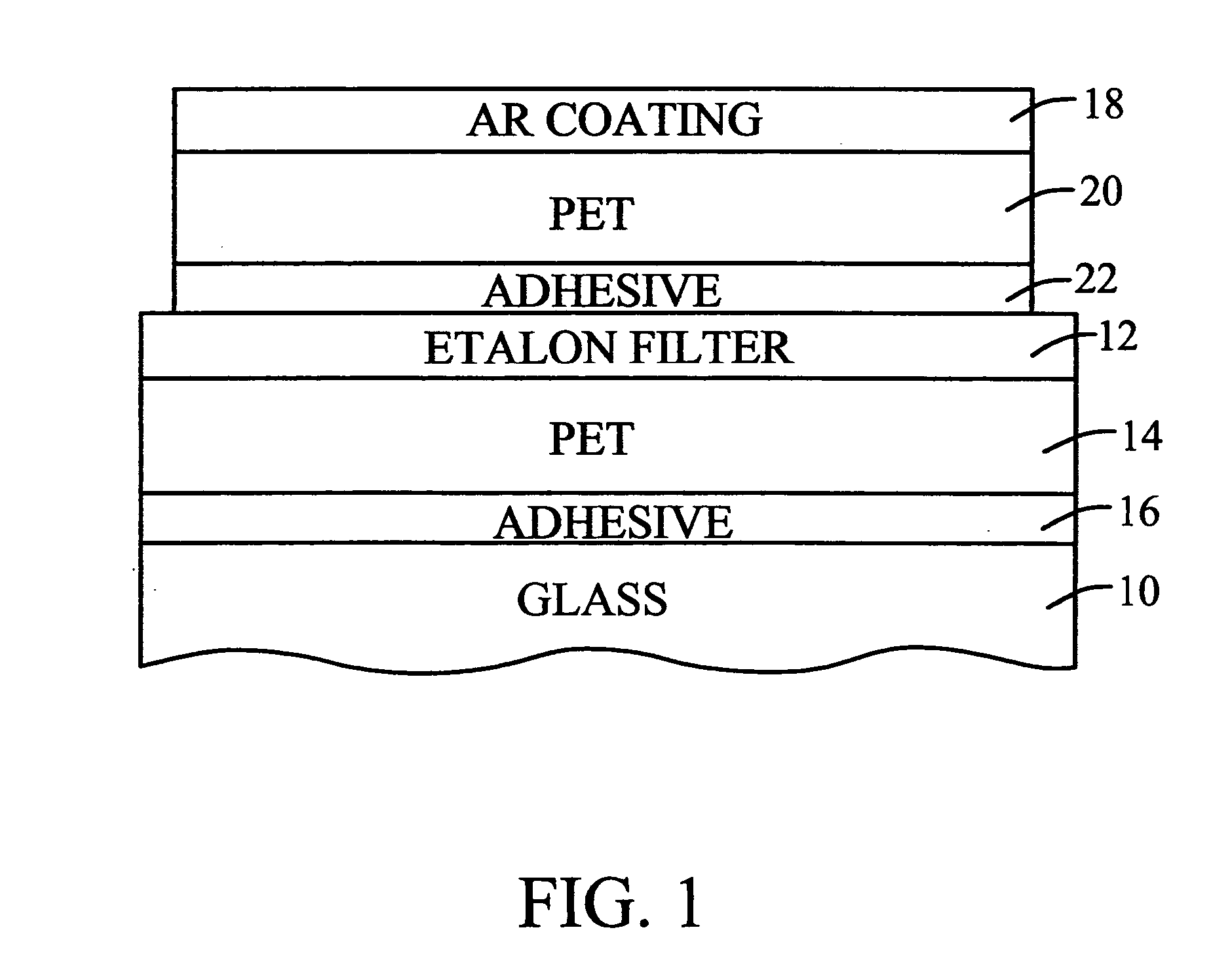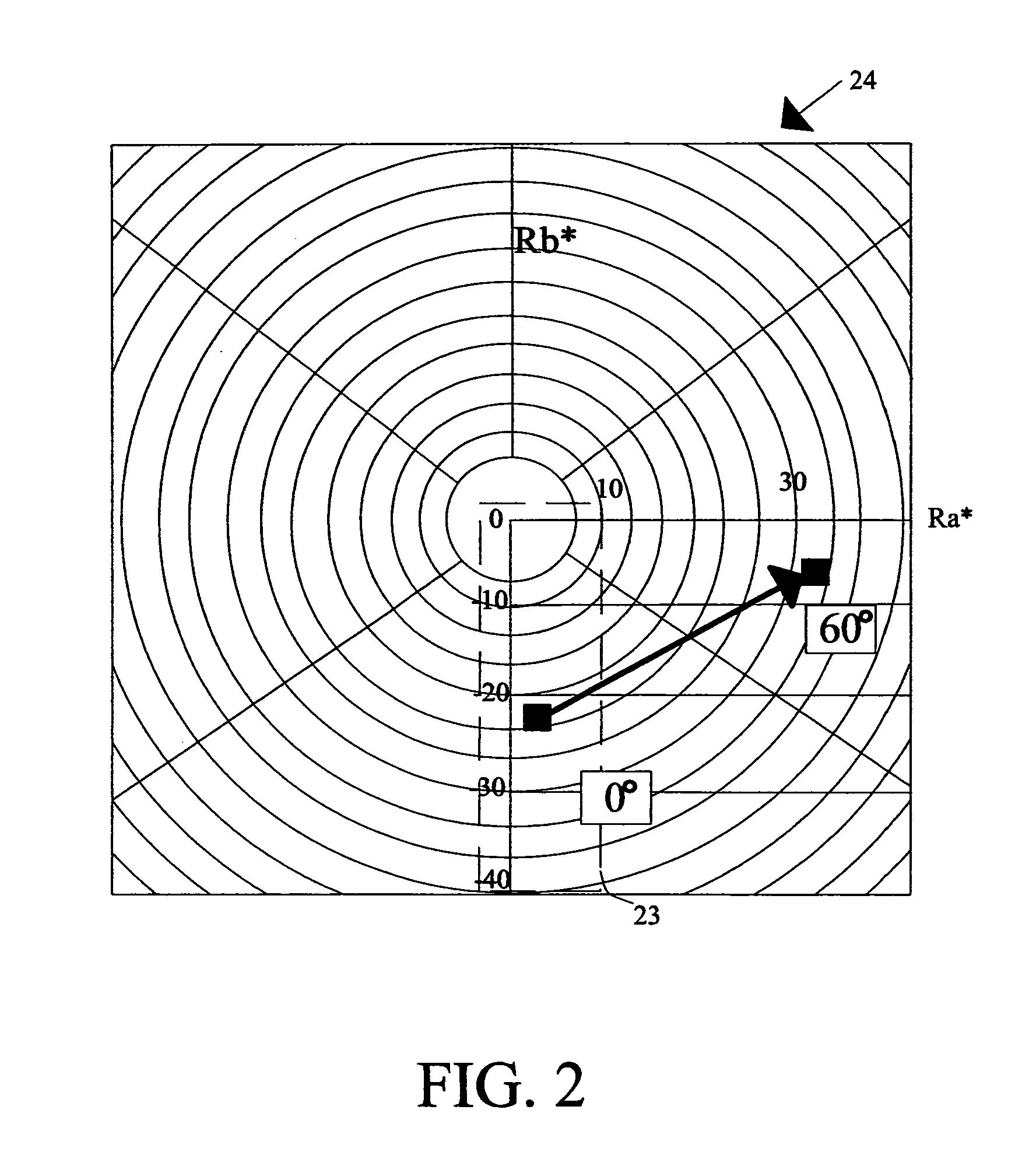Plasma display filter with a dielectric/metallic layer stack of at least eleven layers
a technology of dielectric/metallic layer stack and filter, applied in the field of optical filters, can solve the problems of conflicting design factors regarding the design of pdp filters, color change distracting, and difficulty in maintaining target levels
- Summary
- Abstract
- Description
- Claims
- Application Information
AI Technical Summary
Benefits of technology
Problems solved by technology
Method used
Image
Examples
example 1
[0030] The structure of FIG. 3 may be fabricated using indium oxide as the dielectric material and silver as the metallic material. A thin titanium layer (less than 2 nm thickness) may be deposited on top of each silver layer prior to deposition of the dielectric material, so as to improve the silver conductivity. Table B shows the materials and thicknesses for nineteen layers of one sample formed in accordance with the invention. The alternating pattern 26 of FIG. 3 is comprised of Layers 4 through 14. This alternating pattern is formed on a first PET substrate (Layer 3) that is joined to a thicker substrate (Layer 1) by a layer of pressure sensitive adhesive. Additionally, a color-correcting AR coating (i.e., an AR coating exhibiting a negative Ra* shift with increasing angle of incidence) is achieved by the combination of Layers 17, 18 and 19. The color correction is a result of a proper selection of materials having particular indices of refraction. In the embodiment of Table B,...
example 2
[0032] A sample of the structure formed in accordance with FIG. 3 was laminated as in FIG. 1, with a commercial antireflective coating 18. The structure was then annealed for 48 hours at 100° Celsius in air. The annealing did not change the optical properties in transmission or in reflection. However, the sheet resistance was reduced from 0.96 ohms / square to 0.80 ohms / square.
example 3
[0033] In another sample, the coating as described in Example 1 was over-coated with an acrylic antiglare hardcoat, such as the hardcoat 58 in FIG. 3. The structure was then laminated to a glass sheet. The resulting sample exhibited excellent transmission and reflection characteristics. The sheet resistance was 1.0 ohms / square.
PUM
| Property | Measurement | Unit |
|---|---|---|
| thicknesses | aaaaa | aaaaa |
| angle of incidence | aaaaa | aaaaa |
| angle of incidence | aaaaa | aaaaa |
Abstract
Description
Claims
Application Information
 Login to View More
Login to View More - R&D
- Intellectual Property
- Life Sciences
- Materials
- Tech Scout
- Unparalleled Data Quality
- Higher Quality Content
- 60% Fewer Hallucinations
Browse by: Latest US Patents, China's latest patents, Technical Efficacy Thesaurus, Application Domain, Technology Topic, Popular Technical Reports.
© 2025 PatSnap. All rights reserved.Legal|Privacy policy|Modern Slavery Act Transparency Statement|Sitemap|About US| Contact US: help@patsnap.com



